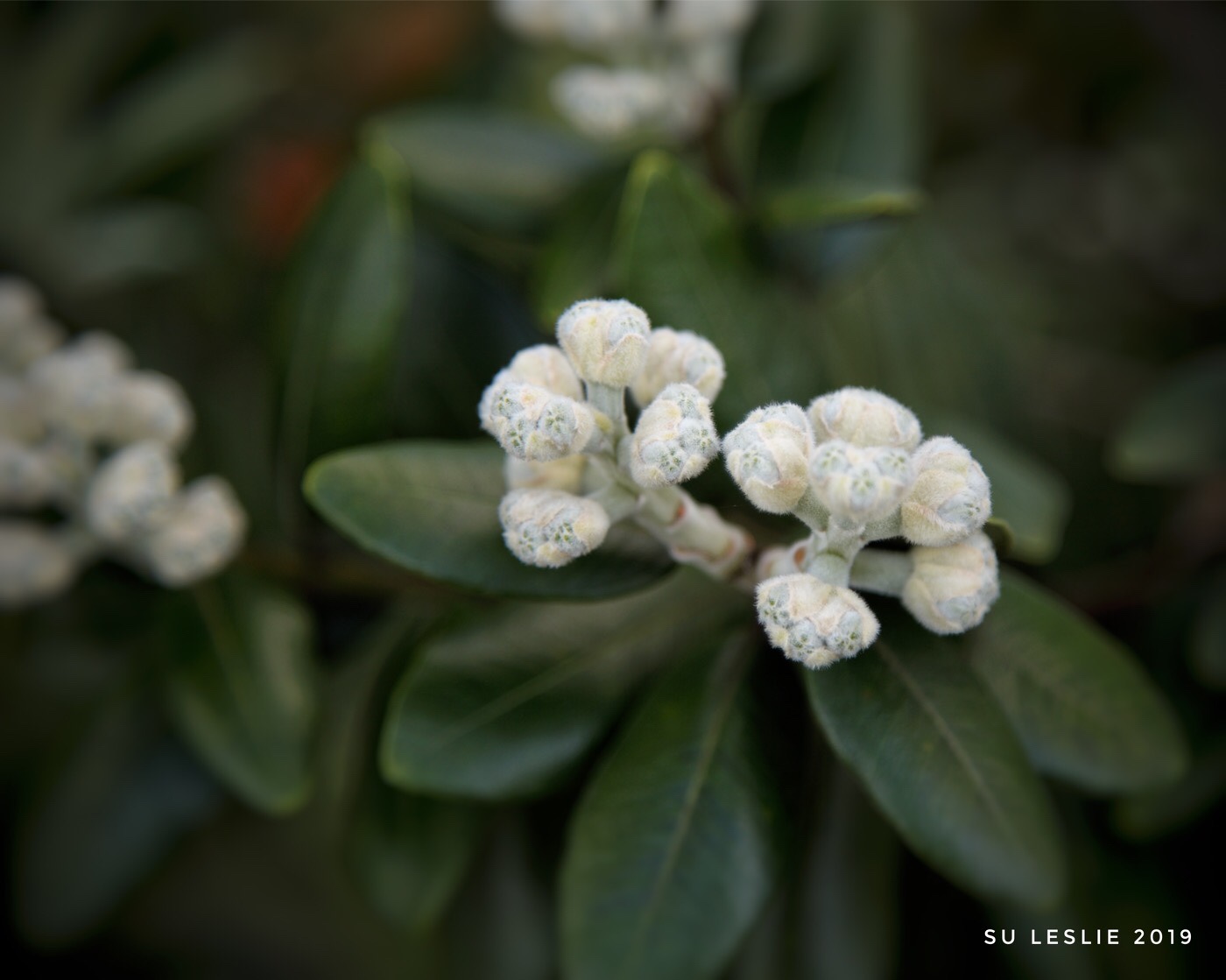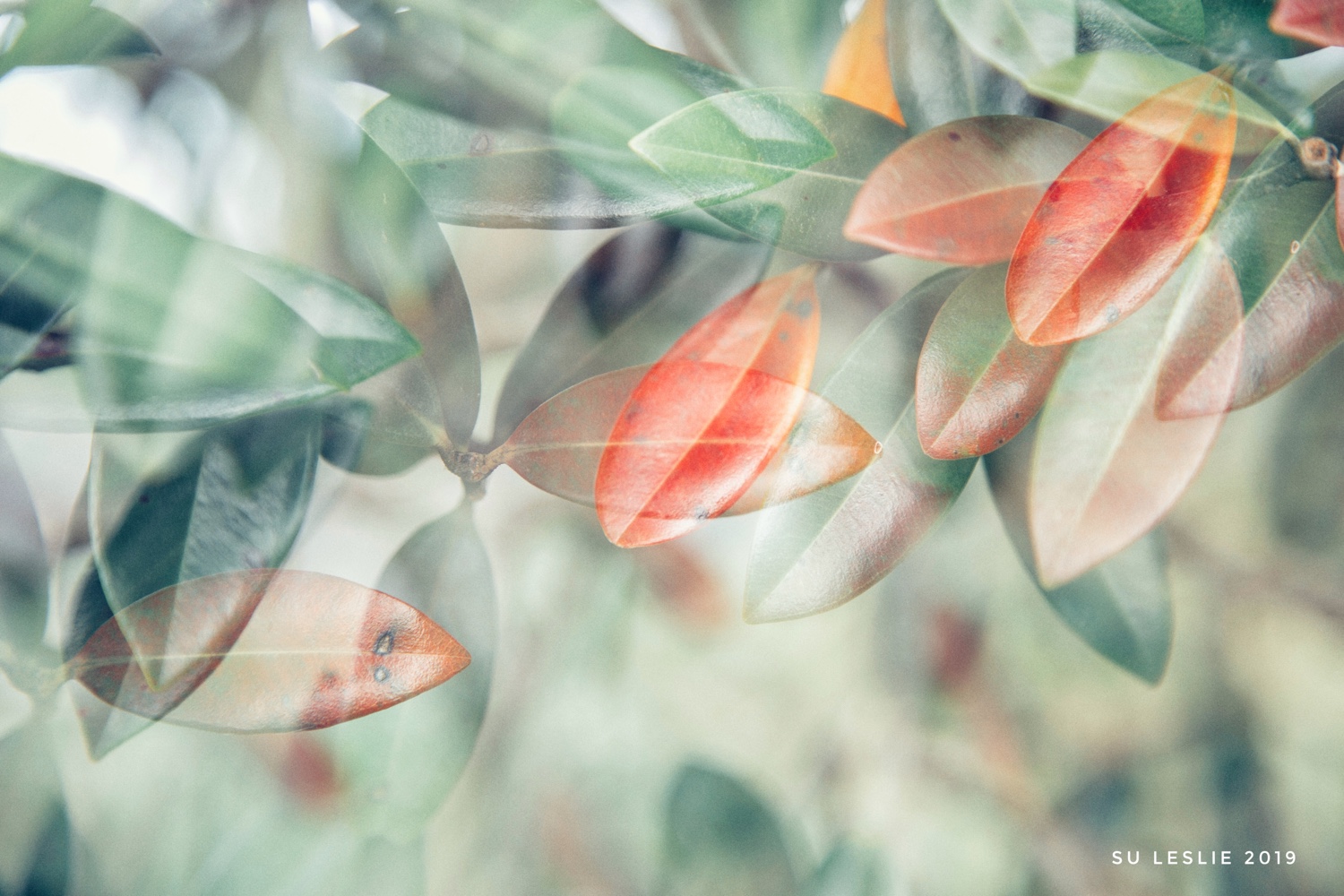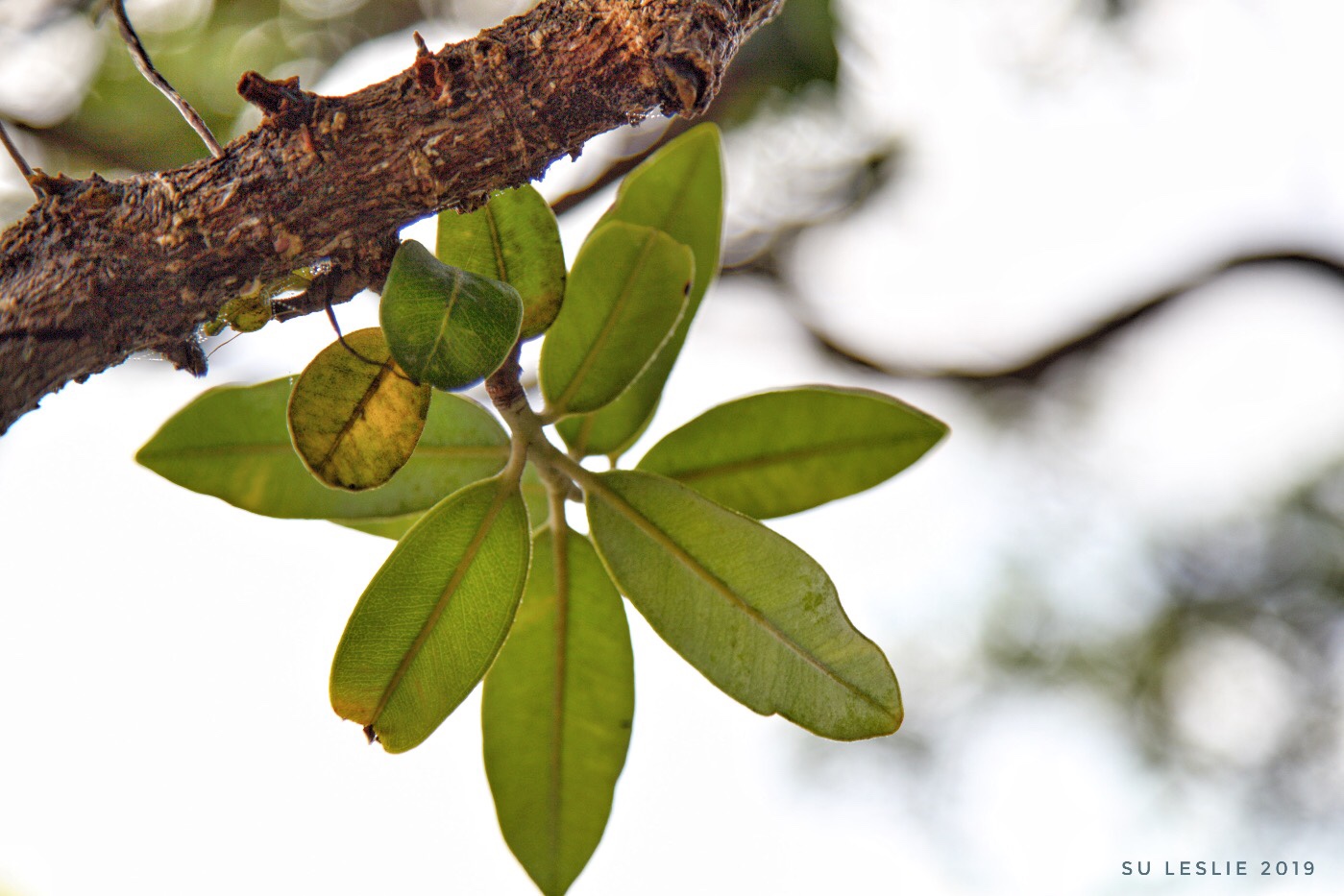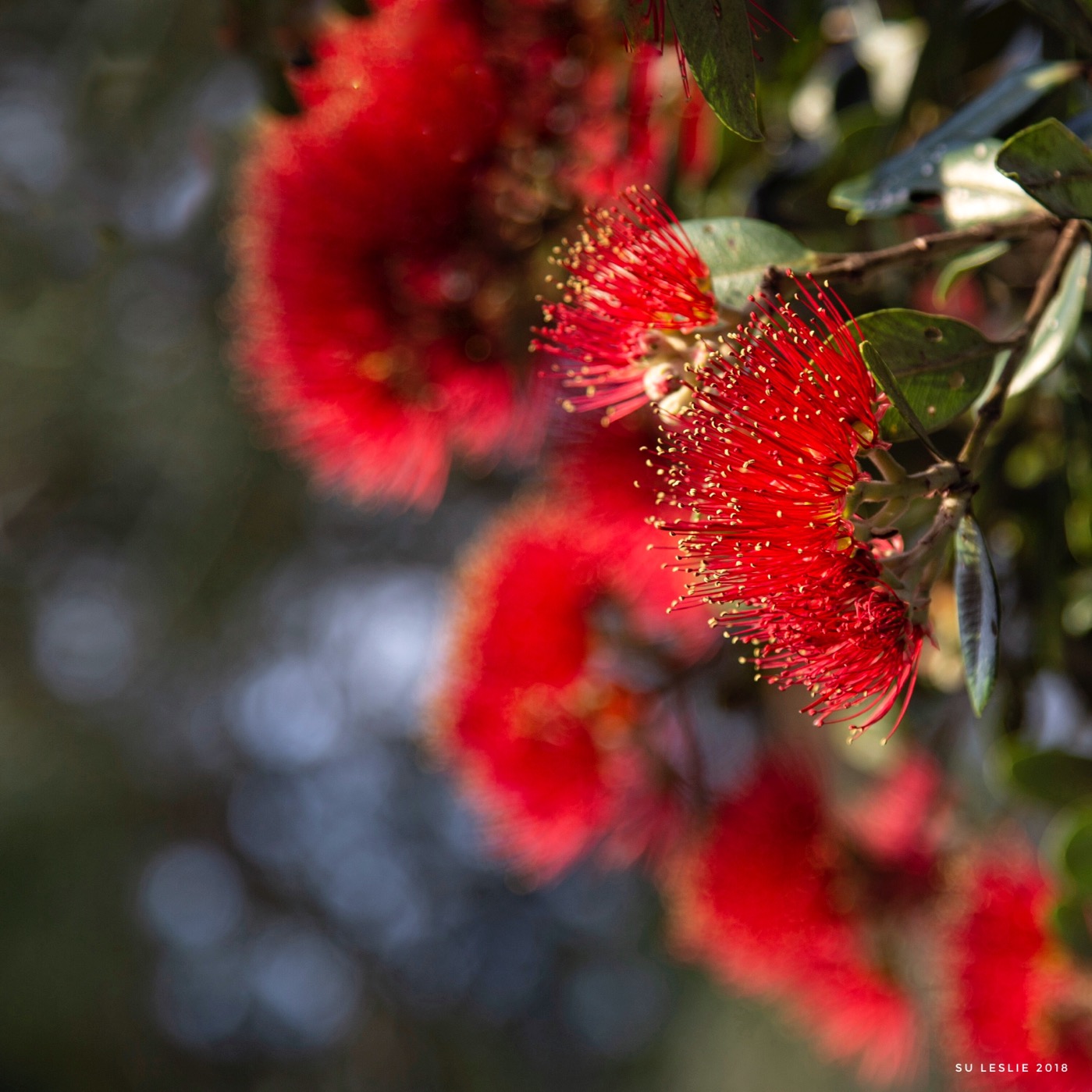
Pohutukawa flowers. Image: Su Leslie 2019
For many here in Aotearoa New Zealand — especially those of us living near the coast — the arrival of summer is heralded by the flowering of the Pohututkawa tree (Metrosideros excelsa).

Pohutukawa flower buds. Image; Su Leslie 2019
A member of the myrtle family, pohutukawa grows easily along the country’s coastline, often spilling precariously over cliffs. Incredibly strong roots anchor its spreading, silver branches that twist and gnarl at impossible angles. It is long-lived, providing generations of beach-goers with shelter and shade where sand meets bush.
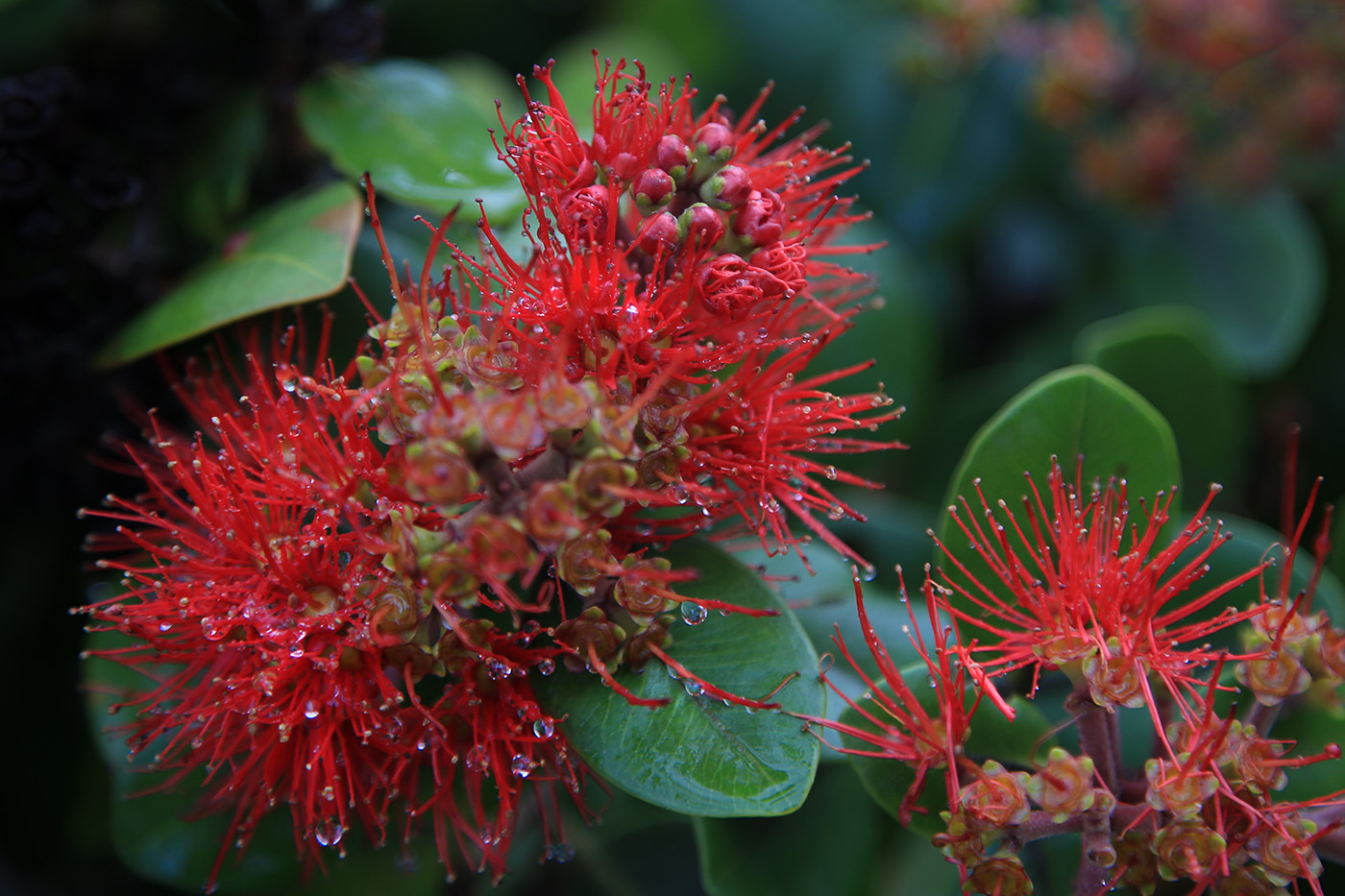
Image: Su Leslie 2020
And between November and February (but particularly in December and January) you will find pohutukawa trees all over the country covered in a profusion of (generally red) flowers.
Early European settlers “adopted” the pohutukawa as the New Zealand Christmas tree, using wreaths and branches to adorn homes and churches during the Christmas festivities. Today, pohutukawa-themed Christmas cards, gifts and tree ornaments are sold in shops around the country.
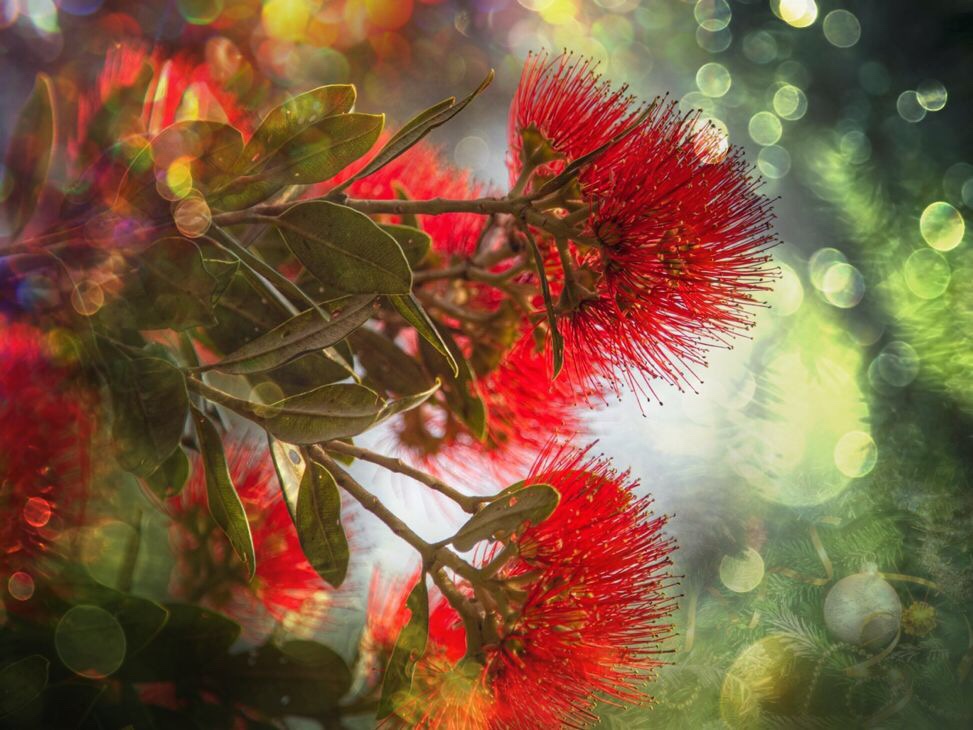
… some of us make our own cards. Image/design: Su Leslie 2018

Pohutukawa flowers — NZ’s “Christmas tree.” Image: Su Leslie, 2017

Image: Su Leslie 2014
The pohutukawa is a common symbolic element or icon in much of my nation’s culture. One of our foremost playwrights, Bruce Mason, wrote a play called The Pohutukawa Tree, but it is from another of his works — The End of the Golden Weather — that I draw these words
“The red is of a fire dying at dusk. The green faded in drab. Pain and age are in these gnarled forms, in bare roots clutching at the earth, knotting on the cliff face, in tortured branches dark against the washed sky.”
— from The End of the Golden Weather, a play by Bruce Mason.
Each year, on Christmas Day, a scene from The End of the Golden Weather is performed on Takapuna Beach, near my home. Each year, several several hundred Aucklanders turn up to see this — free — performance. That too has become a part of what summer means in this tiny corner of the world.
Lens-Artists Photo Challenge | Summer
Friday Flowers








